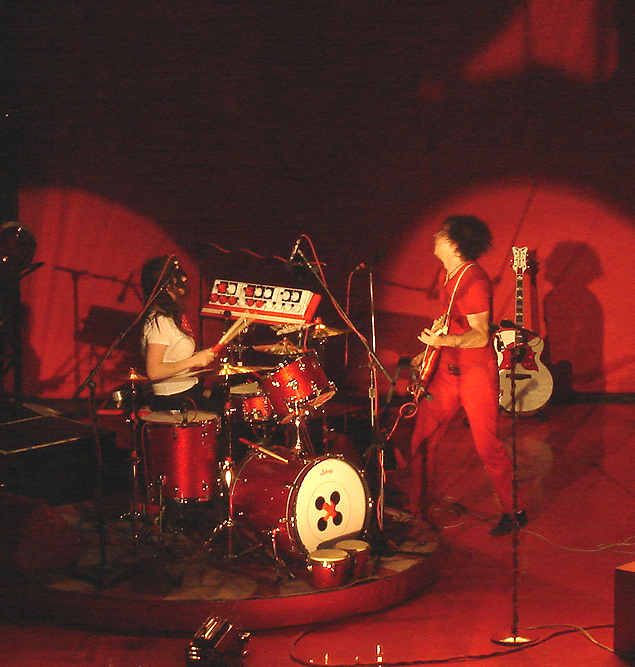Red Black and White – on the end of the White Stripes
It must have been around nine years ago, early on in 2002 when Fell In Love With a Girl had caught a delicate foothold in the UK singles’ charts, that I remember John Peel lapsing into one of his meandering asides about Jack White. For Peel, he was a precocious talent with an impressive affinity with the old blues traditions and enough of an original streak to make his band, the White Stripes, stand out.
2002 was a good time to be working as a young music journalist. The NME was fanning the flames of an energetic movement dubbed the rock revival, which was spearheaded by a clutch of bands given names that rigidly conformed to the <the/noun> formula: The Strokes, The Hives, The Datsuns, The Vines, The Libertines and The D4 all being examples.
Just as with any music subculture, it was tightly defined. The sound mimicked the rawness of 1960s garage rock. Denim was in, so were converse shoes, tight jackets and shaggy hair. At interviews you could bet your student loan that Lou Reed or Patti Smith would be mentioned at some point by the rhythm guitarist or bass player.
It soon became clear, however, to anyone who can see through these media smoke screens that the White Stripes and the new rock revival were not an effortless fit. While Fell in Love With a Girl filled the necessity for a two-minute, riff-heavy rock splurge that slid nicely alongside the Hives Hate to Say I Told You So, and their roots from Detroit threw them comfortably into a pigeonhole with the Von Bondies – another set of garage rockers from Motown – just about there the similarities split.
Where the Strokes were fresh-faced, sharply groomed and just out of a set of elite New York schools, the White Stripes were already somewhat battle-hardened and on their third record. Their last De Stijl was a mashup of three-minute homely, melodic songs buried under Jack’s sliding bluesy guitar or distorted bass-heavy chords. It was about as far from Lou Reed musical homelands as Detroit is from Memphis. De Stijl was dedicated to Blind Willie McTell.
Most interesting, perhaps, was the band’s curious dynamic. It was Jack and Meg, that was for sure, but their identities were always transient. At first Jack would introduce her as his little sister; later it was revealed that she was his ex-wife. At Glastonbury in 2002 he seemed to gaze down at her longingly from behind his Gretsch guitar to the confusion of everyone who was there.
And as much as Jack was extraverted Meg was not, and when she was called upon to struggle with an occasional vocal on stage, he would stand closely by nodding her along with all the empathy of a benevolent tutor. Oddly, at times Jack seemed to be more comfortable in Meg’s shadow. White is her surname, of course, he took it when they married, and on album sleeves they always appeared as equals. On the cover for the Hello Operator/Jolene release, Meg is pictured in white, her arm wrapped around the bass drum: the custodian of the music.
While their identities shifted, their musical dynamic did not. Jack sang, played guitar and piano while Meg bashed away at the snare, floor tom and bass, like a mechanical-minded four year-old. This simplicity lent their songs a beautiful familiarity: almost like a conversation (or argument) between old friends (or lovers). The drums became a canvas for whichever direction Jack decided to go.
Here’s a list of some of my favourite White Stripes songs from the last 13 years.
- Dead Leaves and the Dirty Ground
- Jolene
- Fell In Love With a Girl
- We’re Going to Be Friends
- I Can’t Wait
- Astro
- Little Ghost
- Icky Thump
- Ball and Biscuit
- Suzy Lee
- The Hardest Button to Button
- The Denial Twist
- As Ugly As I Seem
- Hello Operator
- Apple Blossom
- You Don’t Know What Love Is
- Effect and Cause
Image credit: Flatcoat
